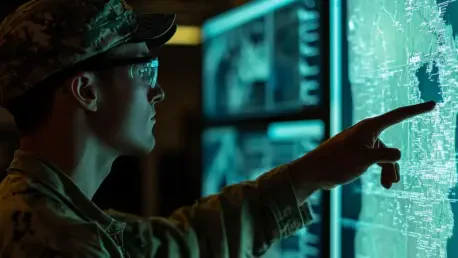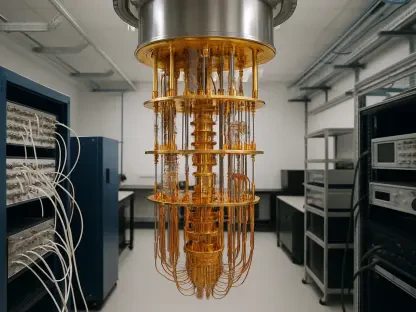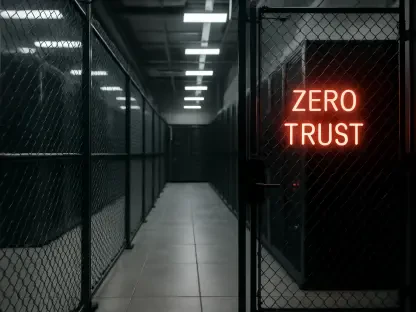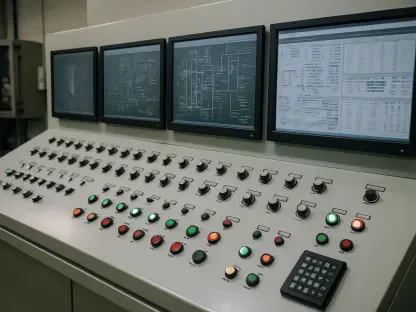In an era where technological advancement dictates military prowess, the United States Army has embarked on a significant quest to transform the management of command and control systems. This revolutionary journey, encapsulated within the Next Generation Command and Control (NGC2) program, is paving the path to an integrated, state-of-the-art command structure. The Army’s initiative arises amid growing demands for a more agile and responsive combat environment, where legacy systems often falter under the pressure of modern warfare. NGC2 emerges as a pivotal element of this modernization strategy, aimed at enhancing cybersecurity, transport, data handling, and application efficiency across the board. As forces prepare to phase out outdated systems, the spotlight shines brightly on Project Convergence—a series of exercises directed at realizing the Army’s advanced capabilities. This substantial endeavor underscores the Army’s enduring commitment to readiness against emerging global threats.
Ongoing Evaluation and Implementation Process
Having showcased the NGC2 prototype at Project Convergence Capstone 5, the Army steered the spotlight on its ambitious plans for future deployment. In a simulated battlefield scenario at the National Training Center in Fort Irwin, California, a battalion tested this novel framework against a live opposing force. This demonstration marked a significant stride, bolstering confidence in the NGC2 system’s potential after successful engagement, suggesting an optimistic trajectory toward deployment. Moving forward, the Army envisions a methodical expansion of this prototype, characterized by systematic evaluations and rewards related to the official program of record. Insights from Brigadier General Kevin Chaney manifest the strategic importance of this phased approach—emphasizing backward planning and establishing robust technology pools to ensure only the best capabilities drive development. As the Army charts its course, these initial successes highlight the collaboration necessary to refine and perfect NGC2’s framework and methodologies.
Bridging Legacy Systems with Modern Capacities
Simultaneously, the Army’s C2 Fix initiative is propelling significant strides within the network functionality realm. Acting as a bridge between traditional frameworks and the anticipated NGC2 landscape, C2 Fix employs commercial off-the-shelf technology to optimize existing systems while awaiting full implementation of its successor. This dual-layer strategic maneuver offers immediate operational enhancements while establishing the foundation for next-gen capabilities post-Capstone 6. As the Army progresses, it nurtures capabilities beyond short-term solutions, anticipating more profound system integration within NGC2, especially as Capstone 6 emerges as a definitive transitional event scheduled for summer 2026. Through proactive testing and evaluation, these initiatives are not isolated to singular battalions but rather extend to a comprehensive analysis by designated test units such as the 4th Infantry Division. Such systematic assessments aim to mitigate risks, ensure resilience, and solidify decision-making processes necessary for formidable adoption.
Collaborative Testing and Integration Strategies
Amid the ongoing transition, the Army adopts a non-traditional developmental methodology that champions iterative improvement alongside comprehensive implementation strategies. This approach enables the Army to capitalize on realistic simulations to evaluate NGC2’s effectiveness, suitability, and resilience continuously. As a part of this methodology, participation of the test community at all stages is encouraged, fostering an adaptive system capable of evolving organically through each iteration. Importantly, this strategy embraces calculated risks and potential setbacks necessary for honing and refining the technological infrastructure over time. Collaboration among various divisions, including the 25th Infantry Division, underscores the Army’s commitment to ensuring that diverse units can contribute experimentally, balancing the benefits of expansive demonstrations without prematurely saturating layers of commitment. Such collaborative ventures signify a broader interpretation of change that allows flexibility in realizing the NGC2 project’s innovative potential through collective military input.
Advanced Contracting and Industry Participation
NGC2 integration accounts for a bold departure from conventional contracting efforts, defined by an innovative hybrid model aimed at perpetuating competition and spurring advancements across the industry. The Army’s approach fosters an open landscape, as evidenced by over 80 submissions garnered in response to a wide-ranging commercial solutions offering, set to reward inventive yet feasible contributions. This dynamic has been deliberately crafted to solicit diverse ideas, capabilities, and self-organized efforts, igniting new prospects for creativity. Companies are encouraged not merely to attempt to deliver entire solutions independently but rather to explore piecewise contributions which, when integrated, foster the comprehensive open architecture system desired. Brigadier General Chaney emphasizes the importance of incorporating collaborative capabilities, suggesting that tapping into the respective strengths of various industrial players will ultimately refine the system’s architecture. Recognition of this dynamic encapsulates the Army’s intention to inspire extensive collaboration and innovation across strategic implementation phases.
Evolving from Battalion to Division-Level Prototypes
In light of the transition efforts, the Army acknowledges the growing complexity involved in scaling NGC2 prototypes from regimented battalion levels to more comprehensive division prototypes. As part of a strategic shift from brigades, divisions now serve as the preferred action units, necessitating the exploration of expanded capabilities. The Army’s strategy revolves around equipping enabling units, including sustainment, aviation, and intelligence operations, with fundamental communications equipment, thus redirecting focus away from solely addressing brigade-specific concerns. This recalibration paves the way for broader integration and operational readiness while navigating technical challenges inherent in broader scale deployments. The importance of scaling up emphasizes not only the Army’s technological aspirations but also its deeper strategic adaptability, ensuring divisions can operate effectively within dynamic environments. Such considerations portray a consistent theme of operational modernization linked tightly with overarching goals passed through careful evaluation of enabling units.
Building Toward a Comprehensive Future Network
At Project Convergence Capstone 5, the Army unveiled the NGC2 prototype, highlighting its future deployment strategy. During a simulated battle at the National Training Center in Fort Irwin, California, a battalion tested this innovative system against a live opposing force. This exercise was a major step forward, reinforcing confidence in the NGC2 system’s capabilities and suggesting a promising path toward deployment. The Army now plans a systematic expansion of this prototype, which will include thorough evaluations and rewards tied to the official program of record. Brigadier General Kevin Chaney underscores the phased approach’s strategic importance, focusing on backward planning and creating strong technology pools to ensure top technologies drive progress. This method prepares the NGC2 system for future challenges. The Army’s journey underscores the collaboration needed to refine and enhance NGC2’s structure and processes, turning early successes into lasting advancements for military operations.









